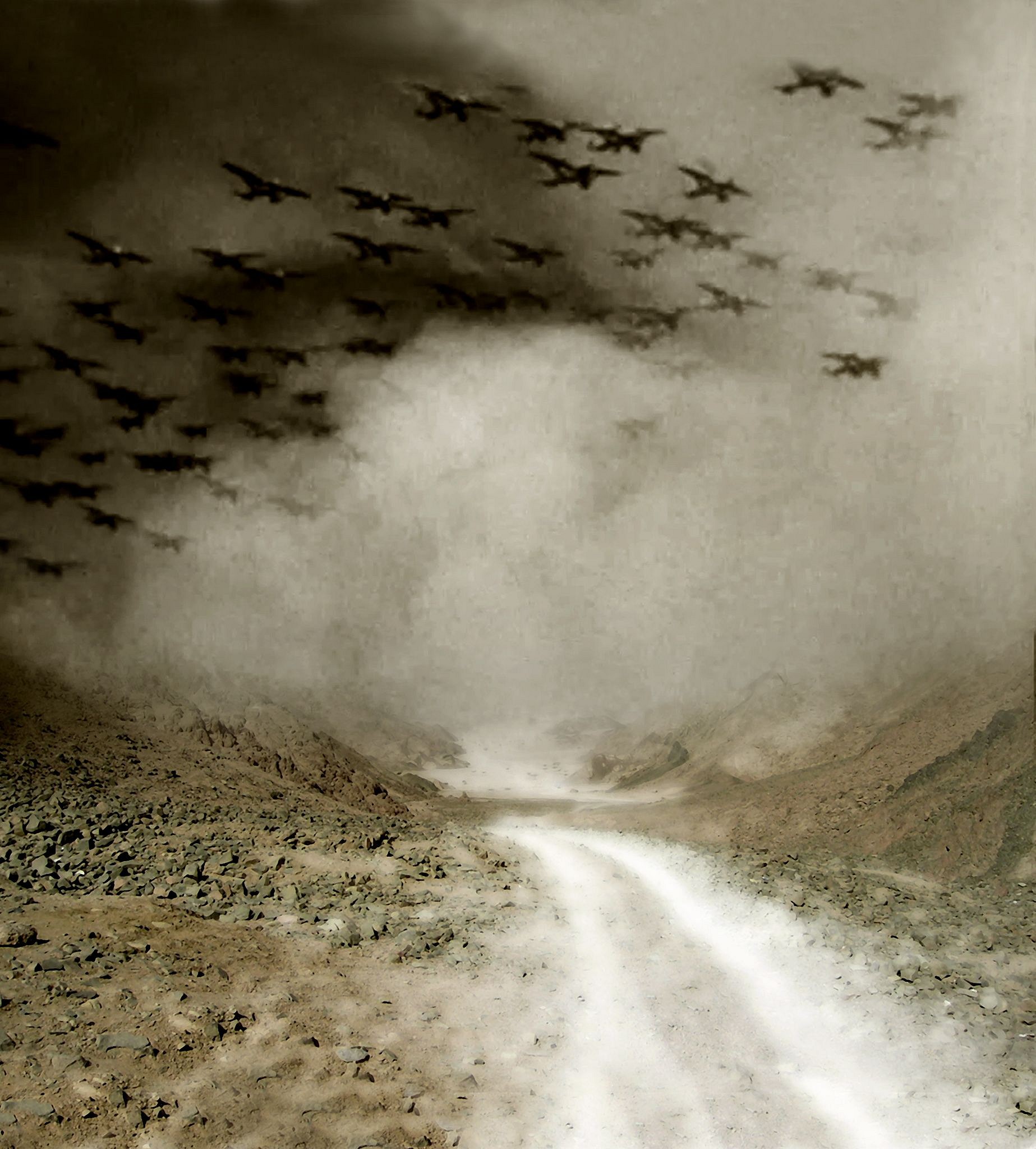
“For the "exteriors," Wasow inverts this relationship of nature and culture. His landscapes - bucolic, banal and/or sublime - bear the imprint of the manmade. There are buildings, roads, power lines, and culverts. Sometimes the relationships are harmonious but, more often, the evidence of man's works functions as a poisonous beauty.
Wasow's pictures are romantic, which brings me back to Frederick Church, Caspar David Friedrich, Ansel Adams, Douglas Trumbull and Syd Mead - all romantics in my book and here's why I make the amalgam: 1) Computer graphics have created a resurgence of interest in representation, and 19th century realist painters were some of the last artists able to resist repositioning themselves to accommodate for the photographic image. So Wasow's interest in (and, in the past, occasional appropriation) 19th century painting makes quite a bit of sense. 2) The American landscape is the linchpin of American photography and, like Adams (or millions of other amateur and professional photographers), Wasow hits the American highways and National Parks to snap scenes which he later inserts in his photo works. 3) The cinema has always been about collage, albeit time-based. Most of the last century saw artists (including photographers) employing collage as some sort of response to that dominant art form. Most of those collages were not about seamlessness - Wasow's works are. And that brings me to the special effect. Special effects artist Douglas Trumbull and the visionary designer Syd Mead created the beautiful dystopia of Blade Runner, an aesthetic that has inspired several generations of "commercial" and "fine" American artists, including Wasow. Blade Runner's F/X was still very much film and set ("bricks and mortar" in today's computer parlance) dependent; but they pioneered the computer effects that Wasow uses on his desktop today. “
--Dike Blair, “Oliver Wasow”, The Thing, 2000.